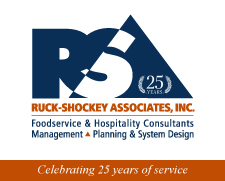
Leading Change In Healthcare Support Services Management
Posted on May 18th, 2020

This Photo by Unknown Author is licensed under CC BY
Hospitals around the country strive to provide excellent medical care to their patients every day. Their vision, mission and core values are all about patient’s health and well-being! Their strategies and plans are directed towards achieving best possible health outcomes and as a result highest patient satisfaction score. Each department and its staff are committed to enhancing patients’ experience and provide them comfort and care during their stay at the hospital. Patients are the focus and at the heart of everything they do!
Support services departments e.g., Food and nutrition services, Environmental services, Patient transport services and Linen services play an important role in enhancing patients’ experience! Patients can easily relate to the courtesy, compassion and the care demonstrated by the support services staff. They can see and taste the culinary excellence on their meal tray and can smell and enjoy the aroma of a clean and sanitized room. They feel the comfort and care in being transported to and from a lab and enjoy the feel of a clean and fresh linen on their bed! . Patients retain the experience provided by the caring, compassionate and engaged staff throughout their stay at the hospital. Hospital Support services teams rock when they serve their patients with compassion, care, respect and pride!
Many hospitals around the country choose contract management companies to provide these important patient comfort services for a variety of reasons. These may be the promise of cost reductions or patient experience enhancements or both. Another reason may be a lack of expertise within the hospital’s leadership team. In the beginning of such contracts, companies may perform well. However, at some point, when these vendors fail to deliver consistently on presumptive expectations and often with a number of opportunities, the hospital administration decides to let go of these vendors. They want to change the management of these departments from those contract companies back to in-house!
The effort to make this enormous change happen successfully, requires a visionary, thoughtful, focused, disciplined, expert and well-planned approach. It requires an initial human and financial capital to reap long term benefits. It’s a six-phase process: Vision, Strategy, Planning, Preparing, Presenting and Executing. It can be done successfully!
Vision
Hospital leadership’s clear vision that is in line with the organization’s Mission and Values is an essential first step. It clarifies the future, sets the direction and it motivates the people who will bring about this monumental change! It provides guidance and rejuvenates energy at every step going forward. Vision mut be strategic and inspirational in quality and specific in future direction. Additionally, an effective vision is created toward a common goal to benefit the employees and patients and supports hospital’s immediate and long terms goals. It must also be Transforming in nature and based on Integrity and Trust!
Strategy
Developing Strategy is the next logical step towards achieving the Vision laid out by the hospital’s senior leadership. It requires selecting a ‘Project Leadership Team’, developing a budget, establishing a ‘Project Timeline’ and creating reasonable and achievable goals. Senior leadership also sets expectations and commits to stay engaged for support and helping ease the impediments and help remove hurdles as the project moves forward. Bringing on board, an experienced and accomplished consulting firm to lead the project is a top strategic decision that the administration makes. This step adds multi-faceted expertise and highly accomplished team of people that is needed to move the project along in a timely manner. These people work together as a team with the hospital administration to help achieve the vision and desired results. Their expertise, dedication and strategic actions bring the project to a successful and sustainable completion and bring accomplishments and growth going forward!
Planning
Detailed and thoughtful planning for the project, from beginning to end, is the first operational and crucial step towards achieving desired outcomes. It takes an experienced ‘thought leader’, a diligent operational expert, and an accomplished organizational planner to work together to create a feasible plan. This plan must align with the hospital leadership’s vision and strategy. Hospital leadership as well Human Resources department may also participate in this phase to not only steer the project team in the right direction but also add value to the planning phase.
This is as much of a managerial task as it is a leadership and visionary work. Plans must be specific in nature and focused on details with key established timelines. Plans will be different for each hospital based on their size, locations and building layouts. Plans will also be different for each service line. The operational experts engaged for each service will obviously be different and assigned specific to their expertise. It is absolutely a ‘Must’ that right people are assigned the right tasks at planning of each service line. As a result, we would have created a ‘Project Team’ that will take this project methodically to the Preparation phase!
Preparation
The newly created project team arrives on site about three months in advance to begin the Learning and Comprehending process of the existing operations. This team will consist of:
- A Thought Leader
- An Administrator
- A Project Leader
- Several Subject Matter Experts on Training, Logistics, Policies and Program Design
- Several Day to Day Operational Experts
The objective for this entire team is to assess the operational capabilities, existing strengths and weaknesses as well opportunities for improvements in all areas of the department/s. Furthermore, to meet and build working relationship with the hospital staff in these department/s. Also, to learn and understand the details of each position’s work flow. Each area’s expert will be responsible to prepare a weekly report about what they have learned and how it will impact once the contract company leaves. For an example, for a mid-size hospital, food and nutrition services team would include; an Administrator, an Executive Chef, a Clinical Nutrition Manager, a Retail Manager, a Logistics manager and a Production manager. Some of the areas this team will work on are; retail menu, patient’s menus, pricing guide, ordering guide, equipment conditions and future needs, employee schedules, open positions etc.
Preparing for the Go-Live day is always on their minds and they strive to be ready with all details outlined and all bases covered!
Presenting
It is imperative that the Project team makes an educational and strategy presentation to the key stake holders e.g., department employees, nursing staff and the administrative staff. Information shared should include what is changing, how the change will occur and how it impacts their work or business! Sharing the plan with nursing in their nursing leadership meetings is an effective way to accomplish this and continued with monthly updates.
One of the effective ways to communicate the upcoming change/s to the department staff is, Employees’ Townhalls where the general information about the project is shared and questions answered. This clarifies many uncertainties in their minds and provides them with the hospital leadership’s vision and strategy for this change. There should be enough of these events planned at various times to allow all employees to participate. Often employees give valuable input and suggestions that benefit the staff, the patients and the hospital!
Executing
At least two weeks before the Go-Live date all preparation and readiness must be verified by the project leader and the project administrator. This readiness must also be communicated to the hospital leadership in a formal manner. Additionally, more employee meetings should be held to share the final execution plans including any menu or recipe changes, production changes etc. Employees must be reminded that their role in this change is crucial and much appreciated. On the day of the Go-Live all hands-on deck to make sure the transition is smooth. A celebratory event should be held within a few days of management change over and employees’ contributions recognized!
Wrap Up
This article is an overview of the phases involved in changing Healthcare Support Services Management from a contract service company to In-House management. Each phase has its own importance and value to build from and to the next phase. The successful transition to In-House management requires clarity and details in plans, expertise and diligence of the project team and the readiness of the all stakeholders to execute on the Go-Live date. The rewards for the successful transition, sustained accomplishments and future growth are well worth the enormous change!
Khalid Shiekh
Consultant
Food and Nutrition Services
May 15, 2020

